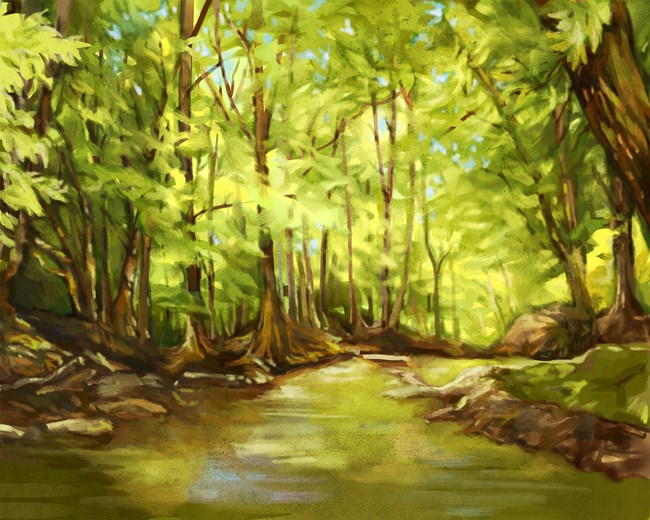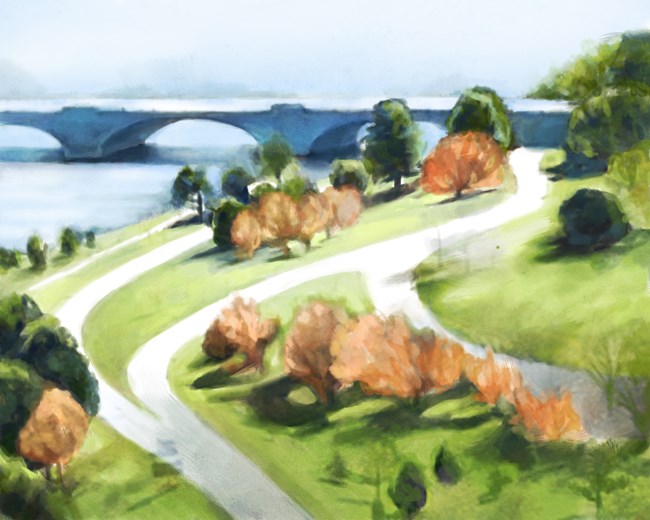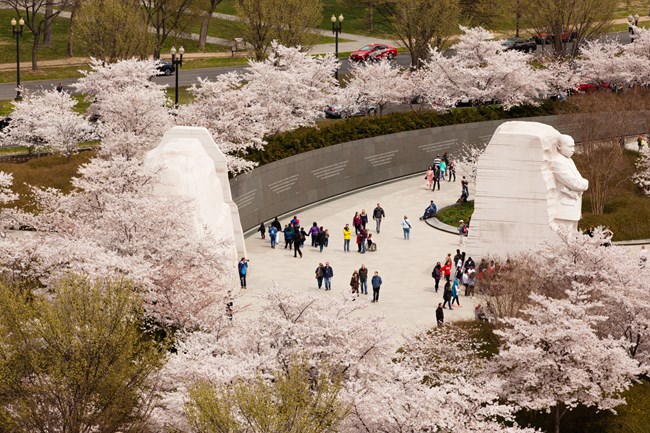Last updated: December 8, 2021
Article
Park Recreation and Climate Change

NPS Photo / Graphic by 4C
As the climate changes, so do the opportunities to recreate in our national parks. The many activities visitors currently enjoy are facing new challenges from rising temperatures and the resulting impacts.
- High Heat: Extreme heat days (over 95˚F) are becoming more frequent as temperatures rise overall, which increases the risk of heat exhaustion while doing activities like hiking and biking. Visitors should check heat indices before visiting and stay well hydrated during their trips.
- Increased Visitation: Visitation rises with warm weather and decreases with cold and rain. If winter is shorter, then the number of visitors is expected to increase even more with growing numbers in the wintertime!
- Severe Storms: Destructive weather doesn’t just threaten visitor safety while it’s happening. The damage caused by downed trees and flooding can lead to path or even park closures.
- Ticks: Ticks are thriving in DC as temperatures rise, humidity increases, and winters are shorter and less cold. Their populations are increasing as shorter winters no longer kill them off as widely. Ticks spread diseases like Lyme or Rocky Mountain spotted fever. Campers in particular should take precautions like wearing insect repellant to avoid bites.
- Poison Ivy: Poison Ivy commonly causes allergic reactions on our skin due to the natural chemicals it produces. Studies indicate increased CO2 in the atmosphere results in larger leaves and stems, longer growing seasons, and higher concentrations of urushiol, the chemical that causes an unpleasant reaction in some people. Avoid contact with poison ivy and do not burn the vines to get rid of them or you might get the urushiol in your lungs!
- Increased Pollen Count: Pollen-triggered allergies start earlier, last longer, and end up more severe when there are higher average temperatures. Allergenic plants and trees, especially ragweed, also produce more pollen when carbon dioxide concentrations increase and temperatures rise.

NPS / 4C park illustration
Prince William Forest Park
In addition to biking, camping, hiking, the Prince William Forest Park (PWFP) offers an ample public fishing experience. Numerous streams flow through PWFP that support a number of fish species.
But the park is experiencing wetter seasons, and climate change is likely to bring more intense rainfall, eroding stream banks and increasing the runoff of harmful chemicals. More rainfall and faster overland flow leads to more pollutants from road surfaces washing into the streams. Decreased water quality puts stress on the local fish and other aquatic species. Warming stream temperatures also impact the abundance and types of fish found in the park.
As with all parks, PRWI monitors stream and lake quality, among other park vital signs, to protect aquatic habitats.

NPS / 4C park illustration
George Washington Memorial Parkway
Climate change is chemically and physically weathering the George Washington Memorial Parkway roadway through higher temperatures and increased precipitation. Longer and more intense heat waves will likely exacerbate issues related to potholes and buckling in pavements.
Sea level rise also poses a threat to low elevation portions of the parkway as they are more vulnerable to flooding events from the Potomac River.
As a result, drivers should expect more frequent road closures for maintenance and repairs.

NPS photo
The Cherry Blossom Festival
The cherry blossoms are a unifying and iconic feature of the Tidal Basin, and they serve as a huge attraction for visitors during the annual Cherry Blossom Festival.
Traditionally blooming in April, the bloom dates serve as powerful reminders of history. The blossoms coincide with Thomas Jefferson’s birth month and the month of Dr. Martin Luther King Jr.’s assassintation, reminding us of the legacy he left behind.
But climate change is moving up the bloom dates. Recent projections state that by the year 2100 the cherry blossoms will be blooming a week to a month earlier, changing visitation patterns and potentially severing the bloom’s historical connections and symbolism.
What Can You Do?
To ensure that you have a safe and enjoyable park experience:
- Monitor heat indices and pollen counts when planning your visit. Try to go when levels are low.
- Put on bug spray with DEET to prevent mosquito bites and ticks, and wear long pants and/or long socks.
- Learn what poison ivy looks like and avoid it by staying on well trod paths.
- After severe storms, check park alerts to ensure trails have not been closed due to flooding, washouts, or downed trees.

